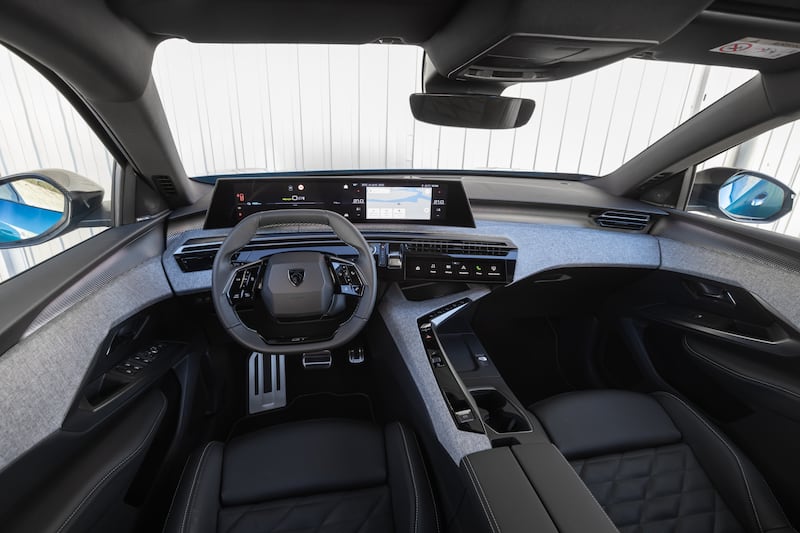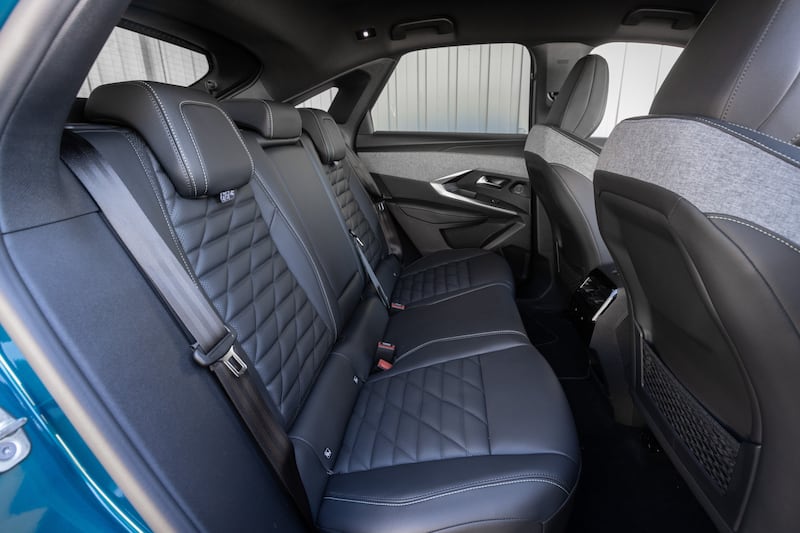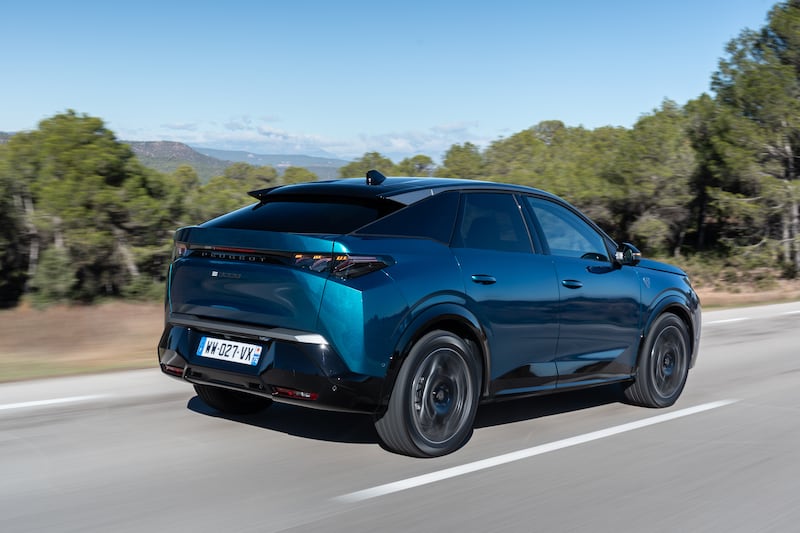The advent of electric cars may not have heralded the design revolutions some expected, but they are creating some stylish new cars.
Take the new e-3008. Previously a regular family SUV crossover, Peugeot has sought to give it a little more post-SUV age persona. It’s still big, it’s still brash, but now it’s a little bit sleeker.
Peugeot is adamant its new 3008 is no coupe crossover; this is a fastback and let no one tell you otherwise.
Most people with more than motoring nomenclature in their lives will not give a jot, or understand the difference. For most of us, this is a family-sized SUV with a slightly sloping rear roofline. Sloped enough to make it sleeker than a boxy SUV, but not so much that it encroaches on rear-seat headroom. It’s probably not going to be the topic of much debate outside Peugeot’s design studio.
With the arrival of electric cars – and expensive battery packs – the costs of the new models rose. Car firms had to give customers some visible signs of premium styling to warrant the quasi-premium prices
A far greater talking point is inside, where the interior makeover is a world away from the hard plastic fare that for decades we accepted in mainstream models.

With the arrival of electric cars – and expensive battery packs – the costs of the new models rose. Car firms had to give customers some visible signs of premium styling to warrant the quasi-premium prices. Enter the interior designers, who could dress up the interiors for several hundred euros in an attempt to soften the blow of a several thousand euro price rise for EVs.
[ Peugeot promises to be EV leader in Europe as it reveals new 3008Opens in new window ]
Back to the interior of the new 3008 – arriving in ICE (internal combustion engine) and EV power options – and the centrepiece is a sweeping new dash, set off by the sizeable, curved screens, the use of cloth and a concave aluminium inset that runs from door to door. A light strip casts its colours on to the metal, delivering a display that could proudly sit in any premium flagship. BMW’s blingmeisters looking to upgrade from their faux crystal plastics should take a chapter from the design book at Peugeot.
True, motorists are not going to hand over €50,000-plus (Peugeot will not say what the price will be when the car lands here next year) for a sleek dash. Yet, given that this is the part of the car the owner spends most time engaging with, it’s important to get it right.
[ Peugeot 408: good looks can only get you so farOpens in new window ]
In the back seats, the difference between coupe and fastback means there is room for adults back there, albeit after they clamber up on to the high-set floor that houses the battery pack.

As with most EVs, designers try to limit the battery pack-derived height increases by lowering the seating position. That means adults tend to sit more in a squat, with their knees higher than their bottoms. It’s an issue for nearly all EVs and car firms would do well to look to Porsche, which has designed rear footwells – or “foot garages” as they call them – into its battery packs.
Peugeot is proud of the fact that it has managed to squeeze in its new big battery pack without making the 3008 too long. Boot space matches the outgoing 3008 at 520 litres thanks the fact that the battery pack fits between the wheels and doesn’t impede on the boot. While 4.5 metres is no supermini, it’s shorter than many EV rivals, thanks to ongoing improvements in battery tech.
Those advances also mean the French car brand can claim a rang of 525km from its 73kWh battery pack and 700km from the long-range 98kWh version. While those figures aren’t official WLTP (Worldwide Harmonised Light Vehicle Test Procedure), the engineers are confident of achieving these targets. And in everyday suburban use Peugeot reckons it can achieve a power consumption of 13.9kWh/100km, which does seem realistic considering we were getting below 20kWh/100km during testing conditions on a mix of national roads and motorways.
What’s more, it believes that the more powerful all-wheel-drive version with an additional electric motor on the rear axle can still match the 525km range of its front-wheel-drive sibling. That’s despite the added 60kg weight of the extra motor and an output that goes from 210 in front-wheel-drive version to 320hp in the all-wheel version.
Clearly Peugeot has opted to tune down the typical madcap acceleration available on EVs in favour of a more traditional ICE acceleration. That also means less energy is expended and so range preserved
On the public roads, the ride is smooth as with most large EVs, but the nose feels lighter and nimbler than the rear, as it pulls along the rest of the car.

We had the chance to drive a pre-production version of the all-wheel drive on track, and it also delivered a more responsive front end than the rear, where the extra motor seemed ever so slightly less responsive to the throttle.
For a car measuring in at over 4.5 metres, it is surprisingly nimble on the bends, but even with 320bhp in the all-wheel-drive it never seemed racy. Clearly Peugeot has opted to tune down the typical madcap acceleration available on EVs in favour of a more traditional ICE acceleration. That also means less energy is expended and so range preserved. It is a sensible move for a mainstream family crossover.
There is power there, it’s just not about racing off the line, but rather delivering it in steady torque. Weighing in at 2.1 tonnes, it’s clearly a hefty car to move about, and it can tow up to 1,350kg if needed.
For those who don’t wish to make the move to electric just yet, other power options will be offered next year as well. A 1.2-litre mild hybrid petrol variant is coming, promising a fuel economy figure of 5.6l/100km and a 0-100km/h time of 10.2 seconds.
However, the big story will be the all-electric e-3008. It is yet another refined electric crossover that may not be exciting to drive yet delivers premium finish on its interior and enough space to satisfy family needs. Of course, that’s all dependent on Peugeot Ireland setting the pricing right.













